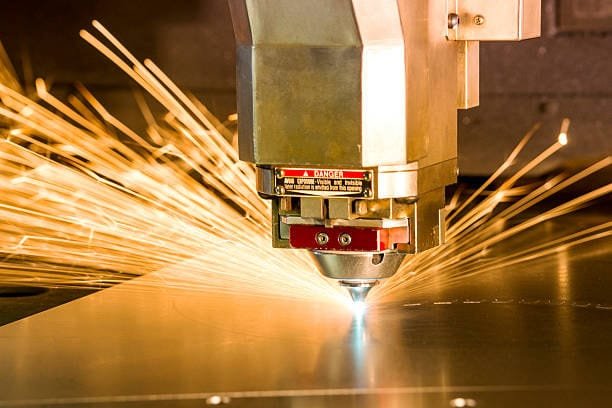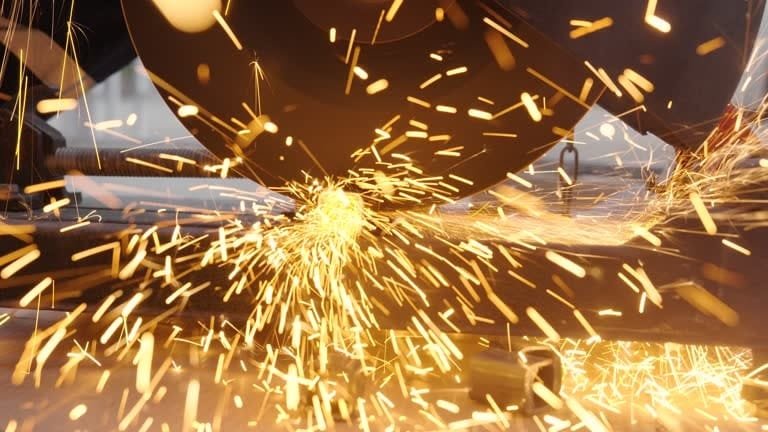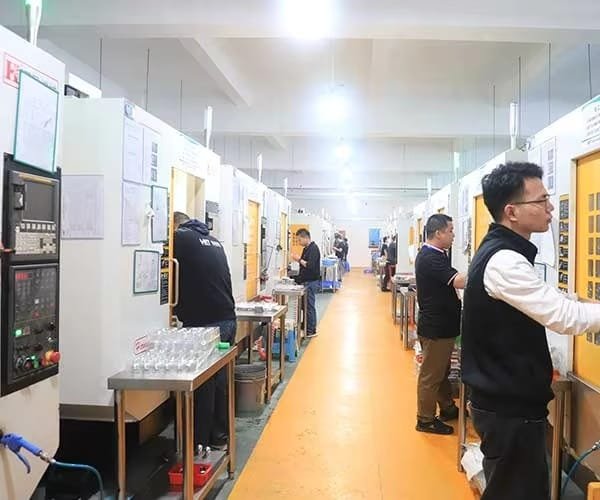In the manufacturing industry, building, and engineering, metal cutting machines are absolutely vital. These machines guarantee accuracy and excellent results by efficiently shaping, sizing, and cutting metals. Many elements influence the choice of a metal cutting machine, including material type, production volume, accuracy criteria, and cost considerations.
Thanks to technological developments, several kinds of metal cutting machines have been created, each with special advantages and qualities. The several kinds of metal cutting machines, their working ideas, benefits, and uses of numerous metal cutting methods will be discussed in this page.
What Are Metal Cutting Machines?

Industrial tools used to cut material from a metal workpiece into a desired form are metal cutting machines. These devices run using mechanical force, thermal energy, and non-traditional cutting techniques among other ways. In manufacturing and engineering uses, the objectives of sharp cutting tool are to attain accuracy, efficiency, and premium surface finishes.
Types of Metal Cutting Tools and Their Uses

Categorized by their cutting techniques— mechanical, thermal, and non-conventional—metal cutting machines are absolutely vital in manufacturing and engineering. Every kind of cutting process is meant for particular materials and results, so guaranteeing accuracy, cutting waste, and maximizing efficiency.
Mechanical Cutting Tools
1. Lathes
Lathes allow operations including cutting, sanding, knurling, drilling, or deformation by rotating a workpiece on its axis. Making symmetrical objects calls for this machine.
- Advantages:
- Great consistency and precision
- flexible enough for several materials
- competent in creating intricate designs
- CNC choices for automated machinery
- Disadvantages:
- costly, particularly using CNC models
- calls both expert operation and maintenance.
- can create vibrations and be noisy.
- Applications:
- Automotive: bearings, crankshafts, gears, bearings
- Aerospace: component parts for landing gear
- Tool production: bolts, screws
- Artistic metal sculptures
2. Milling Machines
Appropriate for shaping metal fabrication and surface creation, milling machines remove metal from a workpiece using rotating cutting tools.
- Advantages:
- high accuracy for complex designs
- Works using several materials.
- Scalable for several manufacturing demands
- Disadvantages:
- High starting and running costs
- calls for technical knowledge particularly for CNC models.
- Applications:
- automotive: gears, shafts
- Aerospace: fuselage and engine building parts
- R&D and prototype
3. Saws
Band saws, circular saws, and reciprocating saws among other types of saws cut metal using a toothed blade.
- Advantages:
- good for thick materials
- fast, straight cuts
- affordable for basic cuts
- Disadvantages:
- Limited to straight cuts
- less accuracy than more modern instruments
- Applications:
- Architectural metalwork
- manufacturing lines
- Raw stock being cut to size
4. Drills
Available in hand, electric, and industrial forms, drills bore holes in metal using rotating bits.
- Advantages:
- Extreme accuracy
- flexible for several kinds of materials
- suitable for cylindrical holes
- Disadvantages:
- constrained to drilling
- might overheat quickly.
- Applications:
- Fasteners for automobiles
- Aeroautical parts
- electronic manufacturing
5. Grinders
Grinders smooth surfaces and hone metal parts by means of abrasion and friction.
- Advantages:
- generates neat finishes.
- good in terms of shaping and deburring
- flexible in many sectors
- Disadvantages:
- Risk of overheating
- calls for protective equipment.
- Applications:
- joint smoothing in welding
- automotive part shaping
- finishing metal artwork
Precision and Specialized Cutting Tools
6. Planer Machines
For large components, planers ideal for metal shape a workpiece against a stationary cutting tool.
- Applications:
- Making grooves out of metal sheets
- Forge dies
- Smoothing of building materials
7. Shearing Machines
Shearing machines effectively cut through metal sheets by means of force.
- Applications:
- Automotive sheet trimming
- Component building for HVAC
- Manufacture of metal appliances
8. Boring Machines
Highly precisely, boring machines enlarge and perfect already-existing holes.
- Applications:
- production of aerospace components
- precision drilling for automotive components
- Construction of heavy machinery
9. Hobbing Machines
Cutting gears, splines, and sprockets is the specialty of hobbing machines.
- Applications:
- automotive gear manufacturing
- System of gear for wind turbines
- Industrial gear mechanisms
10. Gear Cutters
Gear cutters form metal into exact gear designs.
- Applications:
- auto transmissions
- Aerospace equipment boxes
- Manufacturing equipment
11. Broaching Machines
Keyways and splines are among irregular shapes sharp edges that broaching machines cut using a toothed tool.
- Applications:
- Keyways in industry motors
- Vehicle part machining
- Production of firearms components
12. Die Cutting Machines
For complex designs, die cutting machines push pre-shaped dies into metal sheets.
- Applications:
- Technical parts
- Automobile part fabrication
- Ornamental metal hardware
13. Metal Routers
Rotationally cutting heads allow metal routers to hollow metal materials out and shape metal.
- Applications:
- Components for aircraft
- Parts for cars
- Customized metal signage
14. Punch Press Machines
Punch presses punch holes into metal sheets using either hydraulic or mechanical force.
- Applications:
- Components in electricity
- Vehicle cut-outs
- Machine enclosures
15. Ironworker Machines
Ironworkers quickly bend, cut aluminum notch, and shear sheet metal.
- Applications:
- Framework of construction steel
- Ship building
- Compositional steel parts
16. Thread Cutting Machines
Internal and external threads are produced in metal components by thread cutting machines.
- Applications:
- Manufacture of screws and bolts
- Pipework threading and fasteners
- Customizable machine fittings
Thermal Cutting Machines
17. Torches (Plasma & Oxy-Fuel Cutting)
Heat drives plasma and oxy-fuel torches through the metal plates.
- Applications:
- Steel frames
- Shapes of automotive components
- Custom metal creations
18. Laser Cutting Machines
Focused beams used in laser cutters melt or vaporize metal.
- Applications:
- Electronics production
- Aerospace part cutting; precise metal engraving
Every one of these metal cutting methods and tools has different benefits and uses that enable sectors to manufacture goods with more accuracy and efficiency.
Non-Conventional Cutting Machines

Modern cutting techniques used in non-conventional cutting machines surpass conventional mechanical or thermal ones other cutting methods. These precisely cutting machines depend on special technologies including ultrasonic energy, electrical discharge, and high-pressure water streams. For delicate or difficult-to-machine materials, they especially help to guarantee low material distortion and improved accuracy.
Water Jet Cutting Machines
To cut over a wide spectrum of materials, water jet cutting machines use a high-pressure stream of water—often mixed with abrasives. Designed in the middle of the 20th century, this waterjet cutting and technique’s accuracy, adaptability, and ability to process materials without creating heat-affected zones (HAZ) have revolutionized many different sectors.
Key Features
- For extremely precise and complex cutting, uses CNC, or computer numerical control.
- Works well on metal, stone, clay, and composites.
- No thermal distortion preserves heat-sensitive material integrity.
Cost Range
- Typical basic models start at about $20,000.
- Enhanced capabilities of advanced systems can surpass $150,000.
Advantages
- achieves quite complex cuts with near to design standards accuracy.
- Versatile—can cut a wide spectrum of materials without tool modifications.
- removes thermal distortion, so preserving material qualities.
- lowers secondary processing, so cutting production costs.
- Affordable and flexible, suitable for little workshops.
Disadvantages
- slower than techniques of laser or plasma cutting.
Applications
- Cutting composite materials for use in aircraft.
- Creating complex metal and polymer auto parts.
- Making decorative and artistic metalwork.
TechniWaterjet: Advancing Water Jet Technology
For almost thirty-five years, TechniWaterjet has led the way in water jet cutting technologies. Their systems provide remote motion control, exact angle cutting capabilities, and great durability in line with their efficiency.
Key Capabilities:
- Real angle cutting between ± 60 degrees.
- Constant rotation for enhanced accuracy.
- ± 0.1 degree of positioning accuracy.
- Multiple pass cutting for countersinks and chamfers.
- Quieter than conventional hydraulic intensifiers, IntecTMG2 Quantum® Pump is 60% more efficient.
Electrical Discharge Machines (EDM)
Using controlled electrical discharges, electrical discharge machines (EDM—also known as spark machining)—remove material. Originally developed in the late 1940s, EDM is now the preferred technique for machining complex forms in hard-to-machine materials including titanium and high-strength alloys stainless steel.
Key Features
- Extremely precisely erodes objects using electrical sparks.
- Ideal for conductive materials, it lets complicated cuts free from mechanical force.
- Perfect for high-precision manufacture including aerospace components and mold-making.
Cost Range
- Models at entry level begin at about $50,000.
- Depending on their complexity and features, high-end EDM systems run more than $150,000..
Advantages
- Creates difficult to obtain complicated and exact forms using conventional machining.
- produces great surface finishes, so lowering the demand for post-processing.
- Can machine quite hard materials without tool wear or mechanical strain.
Disadvantages
- Restricted to conductive materials, so limiting its application.
- The rather slow material removal affects production.
- High energy consumption and electrode wear raise running costs.
Applications
- Applied in die, mold, and fixture making.
- For sophisticated part manufacture in the aerospace and automotive sectors, EDM is indispensable.
- creates tiny, finely detailed medical implants.
Ultrasonic Cutting Machines

High-frequency sound waves are used in ultrasonic cutting machines to produce vibrations in a cutting blade, so enabling smooth and exact cuts with minimum pressure. Originally designed for food products and textiles, this technology has evolved to find use in industry including composites and delicate materials.
Key Features
- creates high frequency vibrations for easy slicing.
- calls for little force, hence less material deformation.
- Perfect for delicate, layered, or soft, precision cutting of materials.
Cost Range
- Basic models start with $10,000 in price.
- Industrial-grade ultrasonic cutters might set you back up to $50,000.
Advantages
- Makes neat cuts free from material damage or fraying.
- Comparatively to conventional cutting techniques, energy-efficient
- Good for textiles, carbon fiber, and composites among other materials.
Disadvantages
- Not as good for cutting tougher goods.
- Slower speeds make this unsuitable for high volume manufacture.
- More initial expenses for uses in industry.
Applications
- Cutting natural and synthetic fibers for the textile sector.
- slicing multi-layered products precisely.
- Creating intricate forms in advanced composite materials.
Factors to Consider When Choosing a Metal Cutting Machine
- Different metals call for different cutting techniques.
- Accuracy and Precision: Some uses call for great tolerances.
- Faster manufacture rates are provided by CNC and laser cutters.
- Initial investment, maintenance, and running expenses vary as well.
- Waste and Efficiency: Certain techniques generate less waste of materials.
Conclusion
Essential in many different sectors, metal cutting machines have special benefits of their own. From mechanical tools like lathes and milling machines to cutting-edge technologies like laser and plasma, the correct machine will depend on material type, budget restrictions, and precision needs. Understanding the several kinds of metal cutting machines helps companies maximize production, increase efficiency, and raise quality of products mild steel. From manufacture to aerospace, metal cutting machines are indispensable in many different sectors. Whether applying conventional mechanical force or cutting-edge thermal and non-conventional techniques, both forms of metal cutting processes make parts precisely and effectively for a given use.

